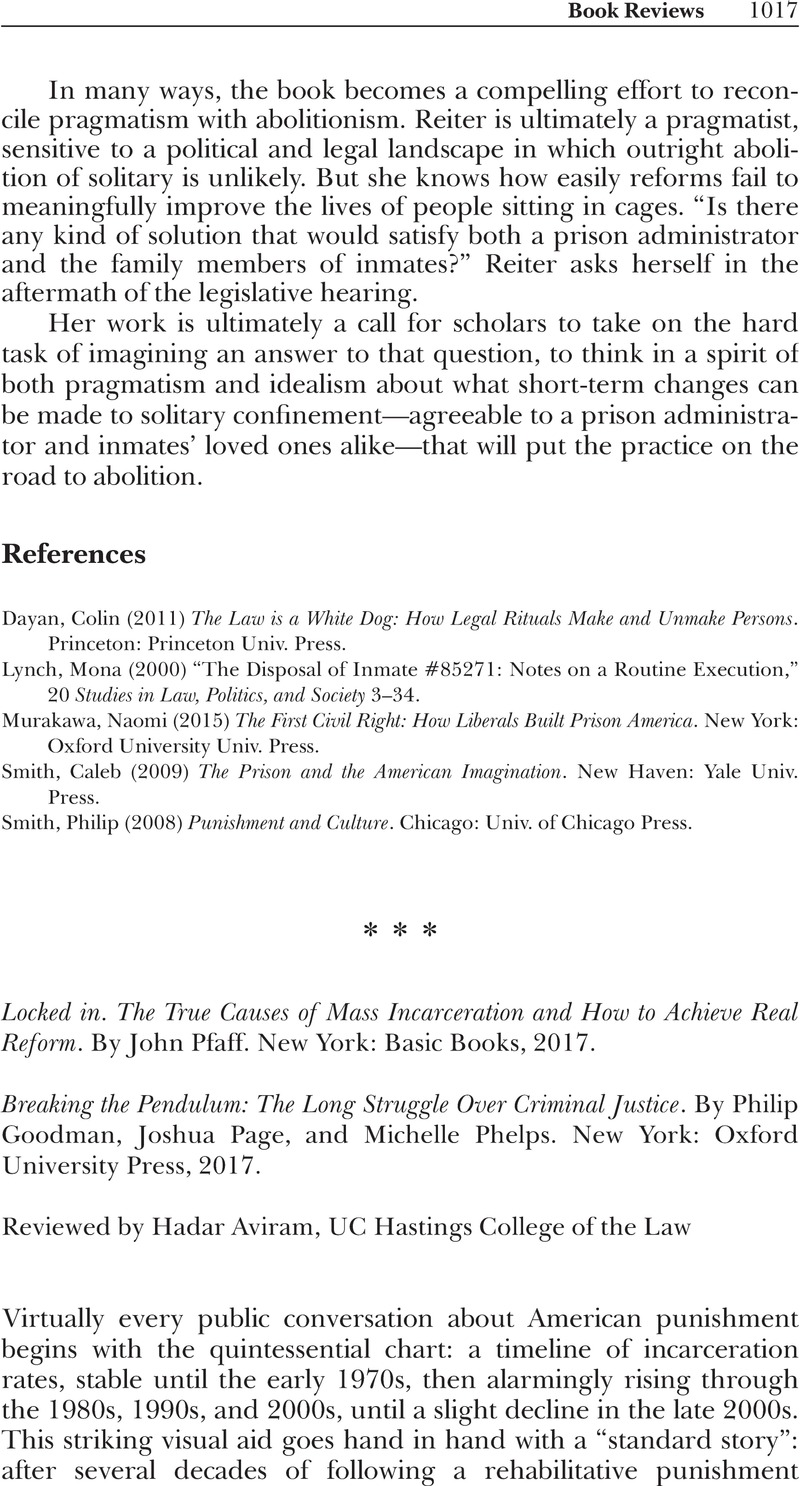Article contents
Locked in. The True Causes of Mass Incarceration and How to Achieve Real Reform. By John Pfaff. New York: Basic Books, 2017. - Breaking the Pendulum: The Long Struggle Over Criminal Justice. By Philip Goodman, Joshua Page, and Michelle Phelps. New York: Oxford University Press, 2017.
Review products
Published online by Cambridge University Press: 01 January 2024
Abstract

- Type
- Book Reviews
- Information
- Copyright
- © 2017 Law and Society Association.
References
- 2
- Cited by


